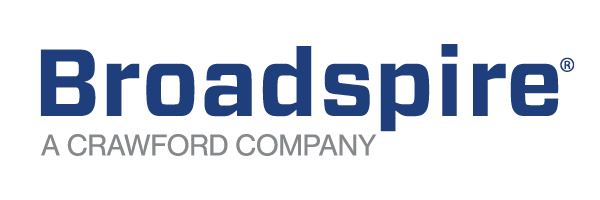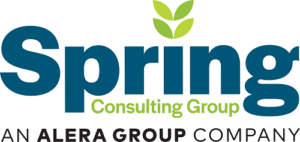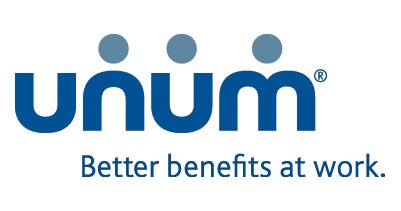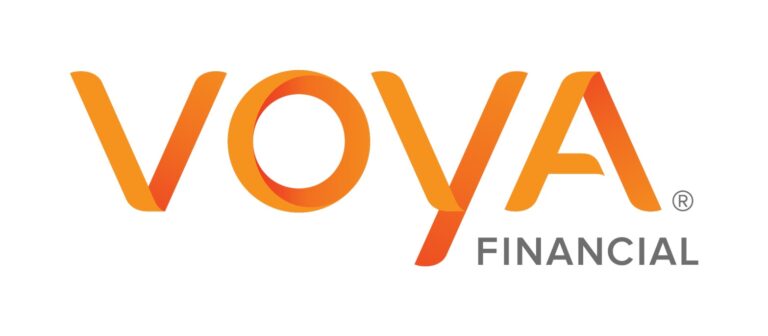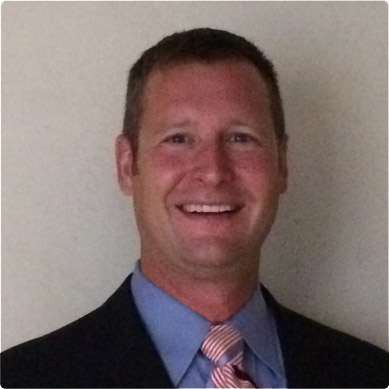Described as one of the most volatile aspects of employment law, paid sick leave laws are increasing (and changing) at a rapid rate. Listen in to this episode with Josh Seidman, partner with Seyfarth Shaw and co-lead of the leaves of absence management and accommodations team to hear about emerging trends and common employer mistakes to avoid!
Resources:
- Hear Josh Seidman share more guidance on paid sick leave laws during the 2024 DMEC Annual Conference in August. Peruse the agenda and register: https://dmec.org/conferences-and-events/annual-conference/
- Visit the DMEC Paid Sick Leave Law Updates page for news and information provided by the Seyfarth Shaw team: https://dmec.org/resources/paid-sick-leave-updates/
Transcript
DMEC: Welcome to absence management perspectives, a DMEC podcast. The Disability Management Employer Coalition, or DMEC as we're known by most people, provides focused education, knowledge and networking opportunities for absence and disability management professionals. DMEC has become a leading voice in the industry and represents more than 20,000 professionals from organizations of all sizes across the United States and in Canada. This podcast series focuses on industry perspectives and delves into issues that affect DMEC members and the community as a whole. We're thrilled to have you with us and hope you'll visit us@dmec.org to get a full picture of what we have to offer, from webinars and publications to conferences, certifications, and much more. Let's get started and meet the people behind the processes
Heather Grimshaw: Hi, we're glad you're listening. I'm Heather Grimshaw with DMEC, and we're talking about the evolution of paid sick leave with Josh Seidman, a partner with the labor and employment department of Seyfarth Shaw and co. Lead of the leaves of absence management and accommodations team. Josh, we're so glad you're here with us today to help make sense of an increasingly complex landscape that seems to continually change. So to get us started, I'm hoping that you will give listeners a quick general overview of employee sick and safe leave law types in the US and the challenges they pose for employer compliance.
heading into the beginning of:Heather Grimshaw: I'm constantly amazed by the complexity of abiding by and complying with these different laws, but hearing you detail some of that, it really is. It really seems overwhelming. And hearing that you can learn of changes that are implemented one month later is really daunting.
Josh Seidman: Yeah, absolutely, Heather. It's rapid fire in a lot of cases, and one of the big challenges which isn't isolated to the paid sick leave world, but this happens very often with state leave law developments and certainly local municipal leave law developments. There is not a lot of fanfare when these changes are announced. There are a lot of different tracking mechanisms that are out there, but very often it's in a reactive, defensive posture rather than in a proactive way. And that leaves a lot of employers on their back foot trying to pivot and account for these changes, which in many cases can upend policies and programs and paid lease structure that they've spent many, many meetings, many weeks, months, years developing based on the nature of their workforce, all to have it upended when a change or two or three changes come down the pike in an incredibly quick fashion.
Heather Grimshaw: So I think my next question for you really was how different are the sick and sick leave laws that have been passed across the country, and also the municipal leaves and how they overlap with the paid family and medical leave laws? How do employers track and implement appropriately, especially when, as you said, there isn't a lot of fanfare when these laws or changes are announced?
Josh Seidman: That's a great question, and there are a few pieces to the answers. I'll take them one at a time here. For starters, the laws are different. As I mentioned a few minutes ago, these paid sick and safe leave laws, you have a paid sick leave law, a paid sick and safe leave law, a paid safe leave law, these paid any reason PTO laws, public health emergency leave laws, COVID paid leave laws, industry specific paid leave laws, and so forth. So the spectrum of these types of paid sick time laws, to an outsider it might look minimal. But once you peek under a few rocks and dive into the details of these laws, you realize that, that there are many variations. And what can get challenging is that these variations can exist within, say, a single state. Look at California, where you have a statewide program and 789 localities with paid sick leave local laws, where there is some consistency between the state law, especially after the amendments that went into effect back on January 1 of this year, and some of those local laws. But there are still a number of ways, important ways, where the local and the state laws differ. Same thing where I'm based out of here in New York, the New York City local paid sick leave law, and the New York statewide paid sick leave law. Good amount of overlap on a number of topics, but there are some where the two laws do not overlap. In fact, there are some where they butt heads with one another, and that can lead to big, big challenges for companies. And when we're thinking about what are the differences, you're not just looking differences from one state to the next, but those certainly exist. But just again within a state, interstate differences, which becomes a big challenge for employers who might say, oh, well, I only have to deal with one, two of these laws. How hard could it be? It can be really hard. Then when we think about the localities. I mentioned this a few minutes ago, but to reiterate, it is not just cities, and it's not just major cities, but it's also some smaller scale towns, municipalities, counties. And when it's a county wide law, as we've seen, most notably in Cook County, Illinois, that can lead to a patchwork of compliance within just that county. There were a number of municipalities within Cook County, Illinois, that prior to the most recent amendments to that program, which happened very late last year when it converted from a paid sick leave law to a PTO law, paid any reason leave law. There were a number of counties, frankly a majority of counties, that had opted out of the county's paid sick leave law. So technically, the paid sick leave law applied to some portions of the county, but not others. And that again, created its own intra Cook county patchwork of challenges and differences. When we're thinking about the paid sick leave law realm and some of the changes to these, to these types of laws, a big one that's happening very recently, and I've mentioned this a few times now. Is this growth of the related paid time off paid any reason leave law? It has all the same DNA and makeup of a paid sick leave law, minimum increments, eligibility standards, notification requirements, record keeping standards, and so forth. No retaliation provisions. But that time can be used for any reason, as opposed to very regimented, delineated reasons that are still in some of these laws. Quite broad. Broader than what a lot of folks who aren't in the weeds on paid sick leave would think of as covered paid sick leave reasons. But still, it's not. You can use it for anything. It's not paid time off, it's not a personal day. Most of the time there are fixed reasons that these laws call for. But we've seen certain jurisdictions, the state of Maine, the state of Nevada. I've mentioned Illinois. That's the most recent statewide development. And some localities, most notably Cook county and Chicago, both in Illinois, converting their paid sick leave laws into PTO laws. Right, the Illinois, Maine and Nevada, those programs were all PTO programs when they initially went into effect. But we're seeing at least the beginnings of a possible trend of localities or some, maybe even states, converting their paid sick leave law into a paid time off law. And that again will require more differences between the laws and require employers to take a step back and look at their programs holistically and what changes might be needed. Now, you mentioned paid family leave laws and the interplay and overlap between sick leave and paid family leave. There is certainly at a 30,000 foot level, they're both paid time off. They both cover absences related to health. But when you start drilling down, you realize there are a lot of nuance and a lot of distinctions between paid sick leave and paid family leave laws. Paid family leave laws are very often stood up as insurance driven programs operated between the company and the state and the workers, or the company and the insurance carrier or third party administrator and the worker. In the paid sick leave context, more often than not, the interaction is simply between the company and the worker. Paid family leave laws very often will cover broader, longer term, more major life events, bonding with a new child, your own serious health condition, a family member serious health condition, as opposed to paid sick leave laws, which very often will cover more run of the mill, ordinary common day absences. I have a tickle in my throat, I need to run to the pharmacy to pick up some medicine. My child woke up and they were sick. They spiked 102 fever and I need to call out of work for a few hours to take them to the doctor and get some antibiotics. Those are the majority of what sick leave laws cover. Are these, again, more of these run of the mill, everyday absences, even going for preventative care can be covered, right? I'm going for my annual physical. I'm going to get my teeth cleaned. Those things can be covered under sick leave laws, certainly would not be under the paid family leave laws that exist today. Piggybacking on that paid family leave laws also think of them as covering a longer amount of time, while covering a longer duration of absence measured in weeks and months, whereas paid sick leave laws are very often measured in hours and days because of the nature of the absences not being as major a life event as being sort of more ordinary, common day absences. So those are just some of the distinctions between these programs. There are a lot more. There are many more. And one of the biggest challenges for companies that are operating in any of the states with paid sick leave or paid family leave laws, where a lot of the states that have one tend to also have the other. New York, Maryland, Massachusetts, Connecticut, California, Oregon, Washington, they all have both paid sick leave and paid family leave laws on the books. For employers that are operating in those states, coordinating those laws can be very complicated. There are restrictions under either a sick leave law or a family leave law in many contexts where you can't force workers to use their available paid leave while someone is out on a paid family medical leave absence under one of those state programs. So how the employer interplays its existing paid sick leave or PTO or vacation time benefit that can have certain mines, minefields that need to be tightroped and walked through carefully. You also have different standards in terms of how the worker is going to be eligible for the benefit or what absences might be covered or the rate of pay or the increments of use. And all of that needs to be taken into consideration when a company is coordinating between a sick leave law and a paid family leave law.
Heather Grimshaw: I like your use of the word minefields and tightropes because I think those are certainly, it really sounds like those are incredibly appropriate here when you're trying to monitor all these different pieces. And so, Josh, are most of these laws paid sick and safe leave, or are some of them unpaid?
Josh Seidman: That's another really good question, Heather, and absolutely, I feel like I've got my minefield navigation tool scanner making sure I'm not going to misstep or clients aren't going to misstep. That's out all day, every day. There are pitfalls everywhere with these laws. But as far as are they paid or unpaid, what are we typically seeing? The vast majority of the sick and safe leave laws that we're talking about today are paid. It's the acronym PSL or PSSL, right. It's paid sick and safe leave or paid sick leave. Paid sick time. The vast majority of these laws do have a paid component to them. Now, that being said, there are wrinkles, as I expect you expect, and the listeners expect to hear, there are variations and wrinkles within the context of are they paid or unpaid? For example, a number of states do have unpaid safe leave laws, domestic violence victim leave laws, as we often will refer to them as safe leave laws. Those are on the books. Those are distinct from the paid sick leave. Paid sick and safe leave landscape that we're talking about today. But those are out there. You also can have certain of the existing landscape of paid sick leave laws have an unpaid component. Very often, if that exists under a particular program, it will exist for, say, an employer that has a smaller workforce in the state. So there'll be a small employer exception where the time off will be unpaid or partially paid. Partially unpaid. There can also be an initial ramp up period where the law might have, you know, be phased in in different phases and stages where the initial phase or stage might be unpaid and then followed by a paid phase six months, a year, two years later. So that can exist, but is rare in the paid sick leave context. A big point, too for listeners to be aware of when we're talking about are these laws paid or unpaid? The answer most of them are paid. But just saying that it's important to remember that the rate of pay, the formula for calculating how the laws provide that pay that compensation to eligible workers when they're out for a covered reason. That rate of pay standard has, as folks should hopefully be expecting, a lot of variation, a lot of nuance, a lot of divergence between these laws, especially when we're focusing on hourly non exempt employees. It is very often, sometimes it can be the case to pay them at their normal hourly base wage. But in a number of these programs, that is not just the only formula that employers need to follow. Very often the laws will say pay them at their regular rate of pay, which is typically used and most familiar to folks in the overtime premium context. Or there could be a comparable weighted average standard for paying workers. But that weighted average might be over unique look back. Not just the work week in question, but could have a different look back period than employers need to account for or could have certain forms of compensation that companies need to include or are permitted to exclude. You also have this, this concept of rate, in effect, as a standard payment method, which is a term that we throw around and use, but it typically refers to pay the worker, what they would have earned had they worked. And that has many layers to it as well, depending on how the employee is compensated. So a lot of the variation in terms of the pay and the rate of pay and that portion of the paid sick leave laws, it will come down to the legal standard and then also the nature of that employer's workers and the methods of compensation that they receive. So it requires a lot of partnership with payroll departments, understanding what payroll systems are capable of doing and not capable of doing, and again, walking that tightrope between understanding the sick leave law and what's written in the statute of ordinance and then implementing that in practice. So that is how these paid versus unpaid differences can play out in practice.
Heather Grimshaw: That's a great point, too. The difference between that theory and the practical pieces that are entailed can be such a different story. And again, your type example, there is a good one. So do most of the sick leave laws that you're seeing now include mental health as well as physical health? Do they get that granular? Josh?
space, first ever, out of the:ned Safe and Sick Time act in:Time act, which going back to:Heather Grimshaw: That's great context. Thank you so much. And I think especially, I like the reference to the nooks and crannies because as you're, I'm taking furious notes as I'm listening to you talking. There are just so many pieces and parts to this as there always are with disability and absence management topics. But this one seems, especially with all of the fast and furious changes, incredibly difficult and daunting to track. So I think holistic view recommendation is a very good one. Are there any trends that you see across the country when it comes to mistakes employers are making with employee sick and safe leave laws that you would be willing to call out here?
Josh Seidman: Yeah, yeah, I'm happy to, Heather. Certainly at a high level at least, sick leave compliance, it can mean a lot to different companies. Some companies can't stand these paid sick leave laws. Some companies will take them very seriously. Most companies sort of fall somewhere in between. They are incredibly frustrating. The volatility in the space, the fact that when you deal with compliance, it's not just the statute or ordinance, it is the statute and ordinance or ordinance plus the regulations, plus the administrative faqs and model notices and posters and so forth. And that can be burdensome to have to track each of those different elements and pay attention to potential changes, which, as we said earlier, especially in the context of faqs and regulations, come with very little fanfare. So it is, you know, when you have a multi state or nationwide workforce dealing with the spectrum of more than 40 of these different types of laws, that can be a really big pill to swallow. Some of the areas for employers to pay attention to when we're thinking about compliance. One, for example, is I don't even need to have a written policy, right? I'll comply in practice, and some companies will go that route and potentially lean on model notices and posters and things. But that approach can only get you so far. It can work in some places, but not everywhere. Important to connect with council and folks that are the subject matter experts in this space. To understand that there are a number of locations, New York City, Seattle, among others, that have very robust written policy requirements. You have to have a written policy and it has to include X, Y, Z, ABC, all these different topics in it. Another big point, plenty of companies will want to use, and understandably so, their existing time off policies for compliance. I want to use my PTO, my personal day, my vacation time policies for compliance with these programs. Can't I do so? And the answer is typically, yes, you can, but there are conditions, there are requirements that employers need to pay attention to. And it's very often more than just providing the right amount of time, more than just saying, oh, well, because I've got a PTO policy that gives three, four, five weeks of time off to an employee, depending on seniority and when they were hired, I'm compliant. And you might be compliant with the amount of time with the accrual requirements or the usage amounts. But very often paid sick leave laws will say, if you want to use a non sick paid time off policy for compliance, you have to do something more. You've got to go another step or two or three. Beyond that, you have to apply the same conditions of the paid sick leave law to the time off benefit or to a portion of the time off benefit. And that requires very careful, one step at a time navigation of the compliance for both the policy, the written policy, and then updating your practices, making sure managers are trained properly, HR is trained properly and understand what the requirements are when employees are taking paid time off, PTo or personal time, but they're doing so for a protected absence, and you're using that vehicle, that policy, for compliance with sick leave law. So that gets to sort of another very important point, making sure that managers and HR are trained properly, right, they understand all the interconnected pieces of these laws, the increments, the treatment of new hires, the no discipline, no denials, proper notice practices and documentation and record keeping practices, and so forth. And there are plenty of tools out there to assist. Beyond just the policy rolling out periodic trainings or designing guides, managers guides, HR guides, or faqs for managers, or even for workers. Those can be some of the best resources to help a company with paid sick leave law compliance. I mentioned rate of pay earlier. I'm not going to dive into that again. But just to reiterate, making sure paid sick leave PTO, if it's a paid any reason leave law, are being paid at the right rate, especially for non exempt employees. Incredibly important. That's another big one to pay attention to. And then I'll say maybe a final shout out here is to remember that there are other policies and systems that are impacted that are touched by a paid sick leave mandate. In particular, attendance policies and practices need to be updated. They need to account for paid sick leave law standards for notice and absenteeism, and so forth. Typically, these laws will not allow any discipline, even if the absence is unplanned, let alone a planned absence. But even for unplanned, unscheduled, unforeseeable absences, and when you're thinking about paid sick leave laws across the country, we've hit this point a lot today, but I'll finish off with it. Remember that compliance is not static, right? This is a volatile space. The landscape is changing. It is not fixed. Floor the laws. Even if you're in compliance with just with a program, you've gone through the process of updating it with your systems and your policies, which is great. The law can be tinkered with, it can be adjusted, or it can undergo a whole scale amendment like we saw in Chicago and Cook county recently. So remember that paid sick leave laws are changing, and it's best to pay attention to your policies, your practices. Take a peek at them at least once per year, and then depending on how these laws are being rolled out, sometimes more frequently than that.
Heather Grimshaw: That's fantastic detail and really helpful guidance, Josh. Thank you so much. And before we sign off, I just wanted to flag again the series of paint sick leave updates from the Seyfarth Shaw team. I have dropped that link into the notes section of this podcast episode along with some of the resources that were referenced, and encourage listeners to check out the page and visit it often for updates. As Josh notes, this is a volatile space and we're seeing lots of updates to the page. So appreciate that very much. Thank you again, Josh.
Josh Seidman: My pleasure, Heather. Thank you so much for having me.



